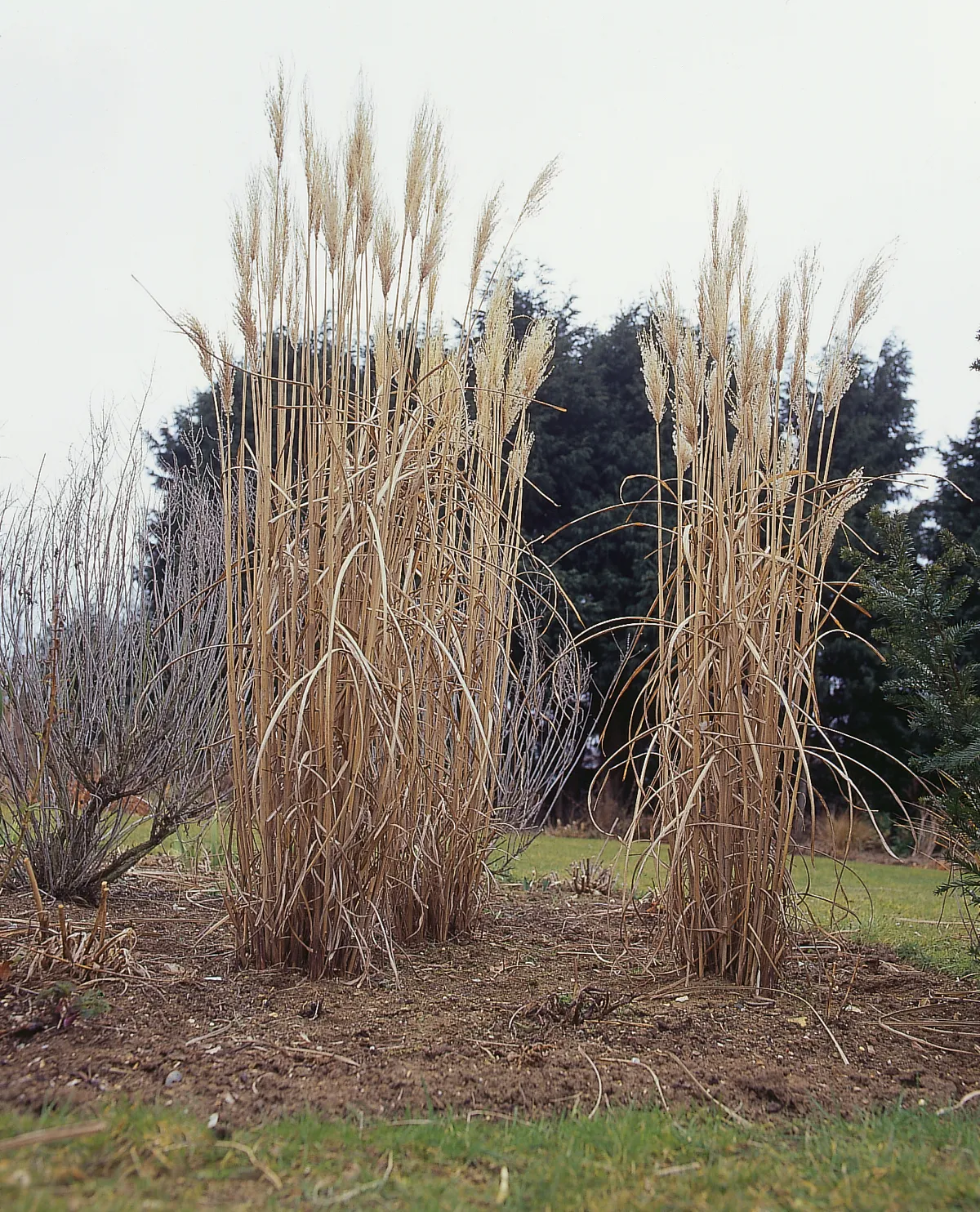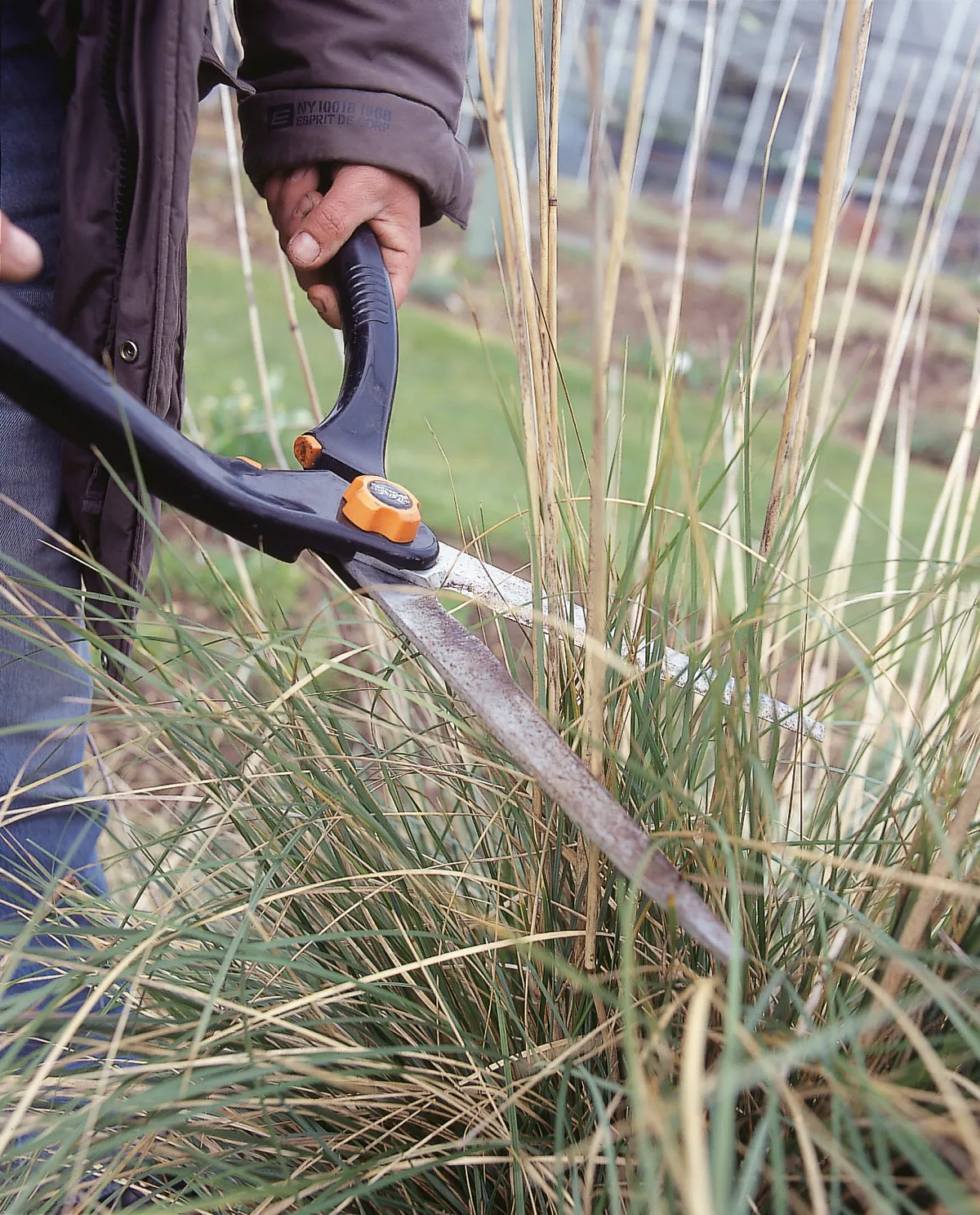Leaving the dead stems of grasses through the winter provides structure in the garden during the bleak season. The moment when a hoar frost sparkles on dead grasses in winter sunlight is a magical, if fleeting, moment.
Ornamental grasses are very low maintenance, but some do need cutting back at the end of winter. Others may need a general tidy up in spring.
But which grasses need which treatment? How and when to cut back grasses depends on whether they are deciduous or evergreen, explains Neil Lucas.
Here's our piece on the best ornamental grasses to grow.
How to cut back ornamental grasses
Cutting back deciduous grasses

Most flowering grasses, including Calamagrostis, Miscanthus, Panicum and Pennisetum, are deciduous. Simply cut all the old growth back to the base at the end of winter – in late February or early March.
Use secateurs, removing each of last year’s stems individually, and being careful not to cut off the new shoots that are emerging at the base. If the clump is too large for this treatment, you can use shears but leave about 10cm of the old stems to avoid cutting through new growth.
You can chop up the old stems and leave them on the border as a surface mulch which helps retain moisture, controls weeds and encourages wildlife.
Deciduous grasses include:
- Calamagrostis
- Chasmanthium
- Deschampsia
- Eragrostis
- Hakonechloa
- Imperata cylindrica
- Miscanthus
- Molinia
- Panicum
- Pennisetum
Cutting back evergreen grasses

Evergreen grasses such as Carex, Festuca and Stipa tenuissima (now officially called Nassella tenuissima) do not need any regular annual care if they are looking neat and healthy, advises Neil Lucas. Comb or rake off any old, tired or dead leaves and flowers in spring.
Neil says that some grasses are semi evergreen, but can be cared for in the same way as evergreens. If they are looking tatty or tired they can be cut back hard in spring.
Neil points out that the golden oat grass, Stipa gigantea, is an evergreen but will require last season’s flower stems removing at the end of winter to make way for the new. You can also cut back the wiry green foliage by about half if it is getting untidy but be careful not to damage the new flower spikes that appear around April.
John Hoyland suggests that to save time, you can cut the whole plant down with shears or a cordless hedge trimmer to form a dome about 25cm high. Within a few weeks new leaves will push through to create a lush base for the golden panicles that are the plant’s main attraction.
Neil Lucas says that pampas grass, Cortaderia, is an evergreen to semi-evergreen in the UK climate but is best cut back hard each spring to encourage new foliage.
In a similar vein, John Hoyland says that in mild winters, the bamboo-like Arundo donax may stay evergreen, and it is tempting to leave the stems alone. However good they are looking in March, cut them down to the ground as this will encourage lots more fresh, clean and healthy growth from the base.
Evergreen grasses include:
- Anemanthele lessoniana
- Arundo (semi evergreen)
- Carex
- Cortaderia (pampas grass)
- Festuca (can be semi-evergreen)
- Luzula
- Nassella tenuissima (formerly Stipa tenuissima)
- Ophiopogon
- Stipa gigantea
- Sesleria (semi evergreen)
- Stipa